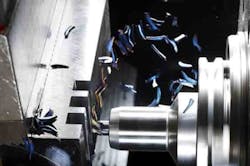U.S. manufacturers purchased $170 million worth of cutting tools in July, 1.1% less than during June and 1.5% more than during July 2013. The figures are contained in the monthly Cutting Tool Market Report, issued by the U.S. Cutting Tool Institute and AMT – the Association for Manufacturing Technology and based on actual sales figures reported by participating cutting tool suppliers.
The two partners represent producers and distributors of cutting tools, which are essential consumable products in machining and manufacturing activity, so that the CTMR offers a perspective on manufacturing volume and activity from month to month.
“While July sales numbers in 2014 were down by 1.1%, this isn't unusual for the months leading up to Chicago’s International Manufacturing Technology Show,” stated Brad Lawton, Chairman of AMT’s Cutting Tool Product Group.
The prospect of IMTS also was cited by AMT in its summary of machine tool orders, which have been slow through the first half of the current year, and now trail the year-ago pace. It’s important to note that machine tool orders represent manufacturers’ capital spending plans, while cutting tool sales more nearly reflect manufacturing activity. Even so, both series indicate that manufacturers are wary of overall market conditions.
“Cutting tool consumption continues to contribute to the industry’s stability,” according to Lawton. “Having remained strong for the sixth consecutive month, these figures reassure our confidence in the current market conditions.”
About the Author
Robert Brooks
Content Director
Robert Brooks has been a business-to-business reporter, writer, editor, and columnist for more than 20 years, specializing in the primary metal and basic manufacturing industries.

